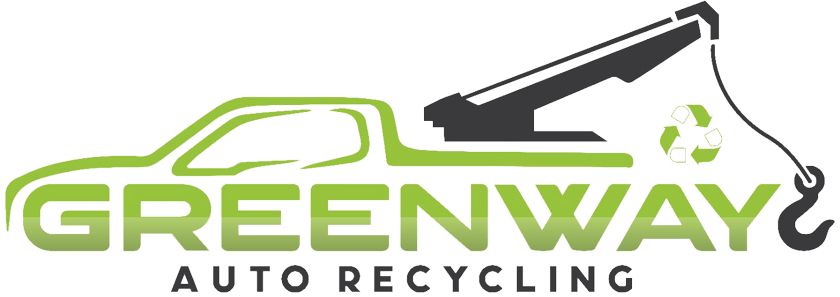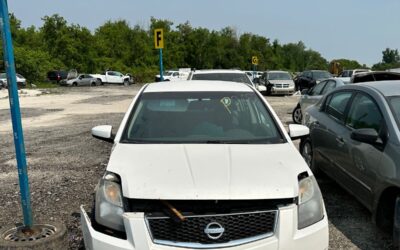Introduction
Ever wondered what happens to old, non-roadworthy cars? Millions of vehicles hit the end of the road each year, but that doesn’t mean everything inside them is useless. Many parts begin a second life in a global trade network.
This blog will walk you through the full journey of scrap car parts, starting from when a vehicle is scrapped, to how parts are recovered, reused, and shipped to international markets. You’ll learn how this global network works, why it matters, and how companies like Greenway Auto Recycling in the GTA help drive this system forward. Let’s break it down step by step and see what happens after a car reaches the end of its life.
1. Vehicle Dismantling
The disposal process starts when a car breaks down or becomes too costly to repair. That’s when most people reach out to a local auto recycler to get it off their hands. Once the vehicle arrives at the scrapyard, it goes through a process known as Dismantling. This is where all the fluids, like engine oil, brake fluid, and coolant, are carefully drained and safely disposed of to protect the environment. After that, the crew removes anything hazardous, including the battery, airbags, and tires.
Auto wreckers salvage any parts that are still in working condition, like the engine, starter, transmission, and alternator. By the time they are done, the car has been stripped down to its most useful components, ready to be reused or repurposed. It’s the beginning of a new chapter for those parts, even if the original car’s journey has ended.
2. Sorting and Testing of Car Parts
Once parts are removed, they go through sorting. Recyclers inspect, clean, and test every component. Not all parts will fetch top dollar. Only those that meet quality standards move forward in the reuse cycle.
Some parts, like mirrors, doors, or bumpers, are resold locally through auto repair shops or online platforms. However, a large portion of mechanical parts head to the export market. Used car parts from North America are in high demand in countries such as Nigeria, Ghana, India, and the UAE.
Recyclers use part numbers, condition reports, and VIN-matching tools to identify and grade each component. This helps ensure buyers across the world receive the right fit for their vehicle model.
3. Packaging and Export Preparation
After testing, approved car parts are packaged for shipping. Parts are carefully wrapped and boxed to meet transport standards.
Some exporters use shipping containers to bulk-send engines, transmissions, axles, and other heavy components overseas. Others deal in smaller packages through freight forwarding companies.
Canada exports tens of thousands of used automotive parts each year. According to Statistics Canada, Canada’s exports of used automotive parts reached over $200 million in recent years. The major export destinations include the United States, the Middle East, Africa, and South Asia.
Also Read: 20 Amazing Facts About Scrap Car Recycling
4. Why Do Global Buyers Prefer Canadian Scrap Car Parts?
Global demand for Canadian used car parts isn’t random. There are good reasons why buyers in other countries trust parts from Canada. First, cars in Canada are built to strict safety and emissions standards. This means many parts stay in better condition, even after years of use. Also, vehicles in colder climates like Canada tend to have tougher components, especially engines and transmissions, since they must perform well under harsh conditions.
Many global markets, such as those in the Caribbean, Africa, and parts of Asia, have a large number of vehicles based on North American designs. This makes Canadian parts a natural fit. On top of that, the price advantage plays a big role. A used engine or gearbox from Canada can cost much less than a new one, but still last for years if maintained properly. That’s why international mechanics and repair businesses continue to rely on Canadian recyclers for parts.
5. How Does This Trade Support the Circular Economy?
The global trade of used car parts supports the circular economy, where products are reused and waste is reduced. Every time a used part is installed in another vehicle, it replaces the need for a newly manufactured one. This conserves raw materials, saves energy, and reduces carbon emissions. It also cuts down on the number of car parts that would otherwise sit in landfills for years.
According to the Automotive Recyclers of Canada, reusing auto parts helps save up to 85 million barrels of oil each year. It also prevents tons of steel, rubber, and plastic from being wasted. Auto recyclers like Greenway help make this possible by carefully recovering and reusing parts from scrapped vehicles. Their work reduces environmental damage and supports a more sustainable vehicle industry.
6. Role of Technology in Tracking and Selling Parts
The used parts industry has changed a lot in the past decade. Today, most serious recyclers use software tools to manage inventory, match parts with demand, and connect with global buyers.
Here is how technology helps:
-
- Inventory Management Systems track every part’s condition, make, model, and location.
- VIN Decoding Tools help identify exact matches for vehicles across regions.
- E-commerce Platforms allow recyclers to reach overseas buyers with just a few clicks.
- Shipping APIs and Tracking Systems make the delivery process smooth and transparent.
Also Read: Importance of Responsible Scrap Car Removal: Environmental Benefits
7. Customs and Regulations You Need to Know
Shipping used car parts across borders involves paperwork and regulations. Exporters must declare each item properly and include the right documents. This includes invoices, part descriptions, country of origin, and proper classification codes. They also need to meet environmental and safety standards in both Canada and the destination country.
Some parts, especially those containing fluids or electronic waste, may be restricted or banned in certain countries. That’s why experienced exporters work with customs brokers who understand the rules. By handling things the right way, recyclers avoid delays and ensure the parts arrive safely and legally. Greenway Auto Recycling follows all required export standards to make sure its parts meet environmental guidelines and reach buyers without problems.
8. Who Buys Auto Parts?
Used car parts from Canada end up with a wide range of buyers. Small repair shops and local mechanics in other countries often use these parts to fix cars affordably. Auto dealers also buy used parts to rebuild and resell vehicles. In countries with limited access to new auto parts, used imports are the only way to keep older cars running.
There are also online stores and wholesalers who buy parts in bulk and resell them locally. Some individual car owners even shop online to find the right replacement for their car. Because of the rising cost of new parts, many drivers in developing countries prefer affordable used components from trusted markets like Canada. These buyers keep demand high for quality-tested scrap parts.
Also Read: Scrap Car Removal Laws Across Canadian Provinces: What to Expect
9. Challenges in the Global Scrap Parts Trade
Although the trade is strong, it’s not without problems. Prices for parts and shipping can change quickly, affecting profit margins. There’s also the risk of fraud — some sellers may mislabel or ship low-quality parts. That’s why buyers prefer dealing with certified recyclers who offer honest descriptions and return policies.
Environmental risks also exist. Poor packaging or handling of parts with leftover fluids can cause pollution during shipping. And every country has different rules for importing auto parts. If those aren’t followed, shipments can be delayed, fined, or even destroyed. This makes it important for exporters to stay informed and organized. Recyclers like Greenway Auto Recycling maintain high standards to avoid these issues and protect their buyers and the environment.
Conclusion
Your old car may not run anymore, but the parts inside still hold value. These auto parts can be recycled and reused for other vehicles. This journey from scrap to reuse helps save resources, supports mechanics and businesses overseas, and keeps waste out of landfills.
Greenway Auto Recycling plays a key role in this system. They don’t just remove unwanted vehicles, they recover what still works and connect it to real-world demand. Their process helps build a cleaner, smarter recycling system that stretches far beyond Canada’s borders. Call (416) 783-9026 to talk to a Greenway Auto Recycling team.





